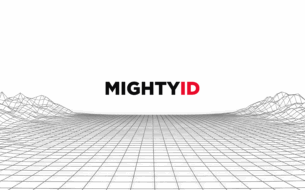Key Takeaways:
- Regular disaster recovery tabletop exercises and clearly defined RTO/RPO objectives ensure teams can execute confidently during actual incidents rather than scrambling to figure out procedures under pressure.
- Identifying and documenting minimum viable access applications focuses recovery efforts on business-critical systems first, preventing wasted time while core operations remain offline.
- Since Okta lacks native full backup capabilities at the tenant level, implementing external automated configuration backups with point-in-time restore capabilities protects against configuration errors, data corruption, and malicious modifications that platform-level high availability cannot address.
Identity and access management powers modern enterprise security, and when Okta experiences a disruption—whether from an errant script, accidental data deletion, ransomware, or complications during a merger—the impact cascades throughout an entire organization. Without proper preparation, teams can find themselves locked out of critical systems, unable to authenticate users, or scrambling to restore configurations with no clear roadmap.
The difference between hours and days of downtime often comes down to preparation. While Okta’s platform itself is highly resilient, tenant-level incidents require a distinct recovery strategy. Organizations can dramatically reduce recovery time and minimize business disruption when facing an Okta-related incident by adhering to these important recovery practices:
- Do a DR Tabletop and Set RTO/RPO
Regular disaster recovery tabletop exercises are essential for validating your Okta recovery procedures before you need them. These exercises should clearly define incident owners, establish communication channels, and document step-by-step failover and restore actions. Most importantly, set explicit Recovery Time Objectives (RTO) and Recovery Point Objectives (RPO) that align with actual business impact assessments.
Okta itself conducts frequent DR tests, and your organization should mirror this cadence with quarterly or semi-annual exercises. During these sessions, validate that your RTO/RPO targets are achievable and that all stakeholders understand their roles. Document any gaps discovered during exercises and address them immediately, as these simulations often reveal dependencies and bottlenecks that aren’t apparent during normal operations. - Identify “Minimum Viable Access” Apps and Flows
Not all applications and authentication flows are created equal during a recovery scenario. Pre-identify and document which apps, policies, and user groups must be restored first to maintain critical business operations. This typically includes:
– Identity Provider (IdP) Routing
– Multi-factor Authentication (MFA) Services
– VPN / Zero Trust Network Access
– IT Service Management Tools
– Human Resources Information Systems (HRIS)
– Security Information Event Management (SIEM) Platforms
Create a tiered restoration plan that clearly prioritizes these systems based on business impact rather than technical dependencies alone. Okta’s own disaster recovery guidance emphasizes planning around specific business use cases. Follow this approach by mapping each critical business function to its required Okta components.
Document these priorities in your runbook and ensure all team members understand the restoration sequence. This prevents wasted effort on non-critical systems while essential services remain offline. - Establish Configuration Backup and Point-in-Time Restore
Core Okta tenants lack native full backup and rollback capabilities, making external backup solutions critical for disaster recovery. Implement automated configuration exports using Okta’s APIs, Terraform state files, or specialized third-party solutions like MightyID. These backups must capture all:
– Policies
– Application Configurations
– User Attributes
– Group Memberships
– Customizations
Schedule backups frequently—daily for dynamic environments or weekly for more stable configurations—and store them in geographically distributed locations with appropriate retention policies. Rehearse restore procedures regularly in non-production environments to verify backup integrity and familiarize your team with the restoration process.
Also, consider versioning your configurations and maintaining a changelog to quickly identify and potentially reverse problematic changes. This point-in-time recovery capability becomes invaluable when dealing with configuration errors or malicious modifications. - Separate High Availability From Disaster Recovery
High Availability (HA) and Disaster Recovery (DR) serve different purposes in a resilience strategy. While Okta’s platform provides high availability through its distributed architecture, this doesn’t protect against tenant-level incidents like configuration errors or data corruption.
That’s why even organizations with access to Okta’s Enhanced Disaster Recovery features need to maintain their tenant-level recovery procedures regardless of platform-level protections. This dual approach ensures you’re prepared for the full spectrum of potential disruptions, from regional Okta service issues to organization-specific configuration problems. - Architect Directory Agents for Redundancy
Directory synchronization can become a bottleneck during recovery if not properly designed for resilience. Deploy multiple Active Directory or Lightweight Directory Access Protocol (LDAP) agents across different sites and regions to ensure continuous synchronization and authentication capabilities even when primary infrastructure is compromised.
Understand and document agent failover behavior, including timeout settings, retry logic, and queue management. Configure agents with appropriate service accounts and network paths that remain accessible during partial infrastructure failures. Test failover scenarios regularly to verify that secondary agents can handle the full authentication load without performance degradation.
Continuously monitor agent health and establish alerts for synchronization delays or failures. During an incident, directory synchronization issues can compound authentication problems, so maintaining robust agent infrastructure is essential for rapid recovery. - Create and Protect “Break-Glass” Access
Maintain at least two non-federated Super Admin accounts with strong, offline-accessible multi-factor authentication methods. These break-glass accounts serve as your last line of defense when primary authentication mechanisms fail. Store credentials in an audited vault solution with appropriate access controls and regular review cycles.
Configure these accounts with authentication methods that don’t depend on your primary Okta infrastructure (consider hardware tokens or printed backup codes stored in physical safes). Document the process for accessing and using these accounts, including escalation procedures and post-use audit requirements.
Test break-glass access quarterly but treat each use as a security event requiring investigation. These accounts should only be used during genuine emergencies, and any access should trigger immediate alerts to security teams for verification. - Continuously Export and Retain System Log Data
Okta’s System Log contains critical forensic data needed for both incident investigation and recovery operations. Implement automated, scheduled exports to your SIEM platform to ensure you retain this data even if Okta access is compromised. Configure exports to capture authentication events, policy changes, application modifications, factor enrollments, and administrative actions.
Structure your log retention to support both security investigations and recovery needs (typically 90 days of hot storage with longer cold storage for compliance). Create saved searches and dashboards for common incident patterns, especially:
– Mass Authentication Failures
– Unusual Administrative Actions
– Configuration Changes
Familiarize your team with ThreatInsight indicators and “Organization under attack” signals. During an incident, these logs reveal the scope of impact and assist in verifying successful recovery actions.
Even the Best Tools Are Only as Good as the People Using Them
The digital economy’s dependence on identity and access management systems means that Okta incidents aren’t just IT problems, they’re business continuity events. The practices outlined here work synergistically to create defense in depth: tabletop exercises expose gaps before they matter, tiered restoration priorities prevent panic-driven decisions, and break-glass accounts ensure you’re never completely locked out.
But perhaps more importantly, these preparations transform disaster recovery from a theoretical exercise into muscle memory, enabling teams to execute with confidence when every minute of downtime translates to measurable business impact. Success in Okta disaster recovery ultimately depends on recognizing that resilience isn’t achieved through technology alone—it requires a cultural commitment to continuous preparation and improvement.
When disaster hits and you have to act fast, MightyID helps you failover to a new IdP so you can keep business running. Contact us today to learn more.





